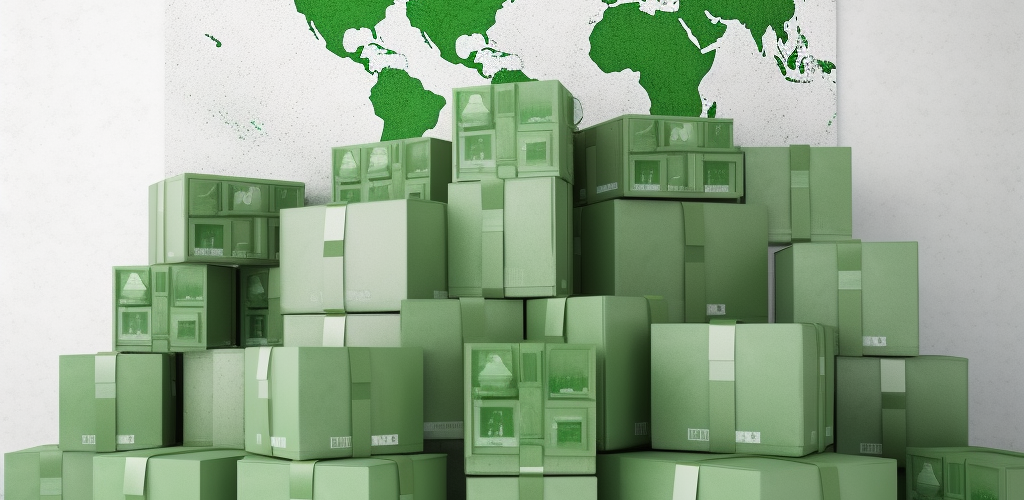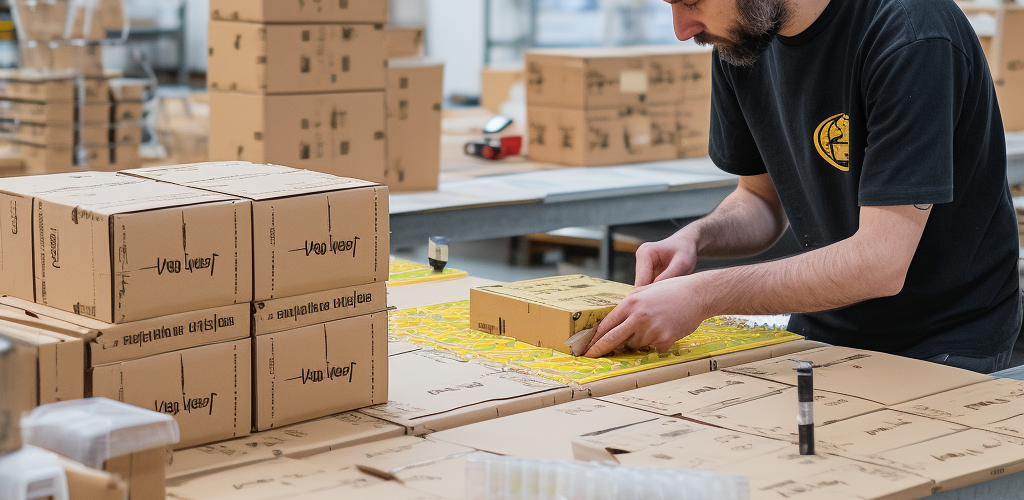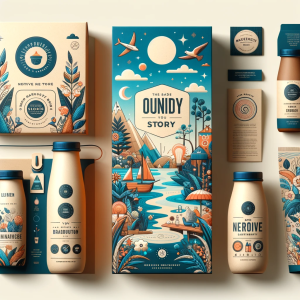Introduction
Packaging has evolved beyond just being a container for products. In today’s world, it’s become a global phenomenon impacting industries, consumers, and the environment. This concept, known as global packaging, has far-reaching implications for sustainability, consumer behaviour, and international trade. In this article, we dive deep into the intricate world of global packaging and drawing from reputable sources. We also employ rigorous analysis, aim to provide a comprehensive understanding of the subject. We also explore the pivotal role of innovative firms, like Sam’s Packaging, in shaping this global trend. Buckle up as we embark on this enlightening journey, unraveling the facts, figures, and facets of global packaging.
Understanding the Global Packaging Market: Key Figures and Facts

The global packaging industry is an ever-evolving, dynamic sector that contributes significantly to the world’s economy. As per the latest data, it reaches an estimated value of $1 trillion by the end of this year. It indicates a robust compound annual growth rate (CAGR).
Diverse and geographically dispersed, the global packaging market consists of numerous segments. They determine these segments by material type (plastic, paper & board, glass, metal), product type (bottles, cans, boxes, bags, pouches), and application (food & beverage, pharmaceutical, personal care, consumer goods).
It’s worth noting that the paper and board segment, a focus area for companies like Sam’s Packaging, maintains a substantial share in the market. Thanks to its versatility and eco-friendly properties. The rising awareness about sustainability is one of the critical factors driving growth in this segment. Understanding the landscape of the global packaging market aids businesses and consumers in making informed decisions. It also fosters a clear picture of the current trends and future projections.
Key Players in the Global Packaging Industry

The global packaging industry is spearheaded by several notable players. Through their continued innovation and quality, have made significant contributions to the market’s growth. These include industry behemoths such as Amcor, International Paper, and WestRock, among others.
For instance, Amcor, a leading global packaging company, specializes in producing high-quality flexible and rigid packaging products. Their have various industries, including food, beverage, pharmaceutical, and personal care. International Paper, another pivotal player, is a global leader in the paper and packaging sector. It’s operations are spanning North America, Europe, Latin America, North Africa, India, and Russia.
Geographically, Asia-Pacific (APAC) is currently the largest market for packaging, mainly driven by China and India’s burgeoning consumer goods sector. Europe and North America also hold substantial market shares. Because of advances in packaging technology and increased demand for sustainable packaging solutions.
It’s crucial to highlight that smaller businesses like Sam’s Packaging also play a significant role. Especially when it comes to specific segments like paper packaging. By focusing on innovation, sustainability, and customer service, these companies can successfully compete in this vast global market.
Trends in Global Packaging: What the Data Shows
Examining data on current trends gives us a clear picture of how the global packaging industry is evolving and the forces driving its transformation.
Sustainability: As consumers worldwide become more environmentally conscious, the demand for sustainable packaging is on a dramatic rise. According to a recent study by Smithers, the global market for sustainable packaging is to reach $244 billion by 2028. A substantial portion of this growth can be attributed to the paper packaging sector.
Smart Packaging: The advent of Industry 4.0 has ushered in the era of smart packaging. The Smart Packaging Market was valued at $5.58 billion in 2020 and is expected to reach $7.52 billion by 2025, at a CAGR of 6.16% over the forecast period 2020 – 2025. This trend is being driven by technological advancements that allow packaging to interact with consumers. It provides additional product information, tracking, freshness alerts, and more.
Customization: In today’s consumer-driven market, customization is key. Businesses are now offering a higher degree of personalization in packaging to attract and retain customers. For instance, Coca-Cola’s ‘Share a Coke’ campaign, where the company replaced its logo with popular first names, resulted in a significant increase in sales. Similarly, smaller brands like Sam’s Packaging have been catering to the growing demand for customized paper packaging solutions, enhancing brand recall and customer loyalty.
These trends indicate that the global packaging industry is set for significant transformations, shaping its future and opening up exciting opportunities for innovation and growth.
Challenges in Global Packaging: Quantifying the Impact

The global packaging industry, while brimming with potential, is not without its challenges. Let’s explore some of the critical issues this sector faces today.
Environmental Concerns: As per a UN Environment Programme report, around 300 million tons of plastic waste is produced every year, with a significant portion coming from packaging materials. With increasing public awareness and stringent environmental regulations, the packaging industry, particularly plastic packaging, is under immense pressure to innovate and transition towards more sustainable options.
Logistical Complexities: With globalization, packaging products often traverse multiple countries before reaching the end consumers. According to the Council of Supply Chain Management Professionals, the total cost of U.S. logistics estimated to be $1.6 trillion in 2020, a large portion of which was for packaged goods. This highlights the logistical complexities, including high costs and long transit times, that are inherent in the global packaging industry.
Varying Regulations Across Countries: Regulatory environments differ widely across countries. For instance, in the EU, the Packaging and Packaging Waste Directive regulates packaging material’s production, while in the U.S., different states have varying laws on packaging and recycling. Navigating these varying regulations poses a significant challenge for global packaging companies.
These challenges not only impact the bottom line of packaging businesses but also shape the future trajectory of the industry. Adapting to these obstacles will require innovation and strategic planning, something companies like Sam’s Packaging are actively in.
Opportunities in Global Packaging: By the Numbers
Despite the challenges, the global packaging industry is replete with opportunities. Here, we’ll explore some promising areas using data.
-
Technological Advancements: The rise of Industry 4.0 technologies such as Artificial Intelligence (AI), Augmented Reality (AR), and Internet of Things (IoT) has opened up new possibilities in packaging. For instance, the smart packaging market is to reach $26.7 billion by 2024, according to a report by Mordor Intelligence. Companies that can integrate these technologies into their packaging solutions, like Sam’s Packaging, are ready to capitalize on this trend.
-
E-commerce Growth: The COVID-19 pandemic has supercharged the growth of e-commerce. According to Statista, global e-commerce sales are to reach $6.5 trillion by 2023, and each of those transactions will require some form of packaging. This presents a massive opportunity for the packaging industry, particularly for those who can offer unique, customized packaging solutions.
-
Evolving Consumer Preferences: Today’s consumers demand more than just functionality from their packaging. They value sustainability, aesthetics, and customization. A survey by Trivium Packaging reveals that 74% of consumers are willing to pay more for sustainable packaging.
As the data illustrates, the global packaging industry is in a dynamic phase. Technological advancements, e-commerce growth, and evolving consumer preferences create new opportunities. Harnessing these opportunities requires both understanding the trends and an ability to adapt quickly.
The Future of Global Packaging: Predictions and Projections

As we look forward, the convergence of several trends will influence the trajectory of the global packaging industry. Let’s examine what data suggests about the future of packaging.
Continued Growth: According to a report by Smithers, the global packaging market is to reach $1.05 trillion by 2024, growing at a CAGR of 2.8%. This indicates a strong upward trend fueled by increased consumer demand, particularly in emerging markets.
Rise of Smart and Active Packaging: As digitalization progresses, smart and active packaging will become more mainstream. The Active and Intelligent Packaging Industry Association (AIPIA) suggests that active and intelligent packaging market could increase its share up to 35% by 2025. With these technologies, brands like Sam’s Packaging will be able to offer enhanced product security, traceability, and consumer engagement.
Sustainability as a Priority: Driven by environmental concerns and regulatory pressures, sustainable packaging is set to gain even more importance. The sustainable packaging market size is projected to grow from USD 89.0 billion in 2019 to USD 117.3 billion by 2024, at a CAGR of 5.6%, according to Markets and Markets.
E-commerce Influence: With the ongoing growth of e-commerce, the demand for packaging that protects goods during transportation, while also being easy to handle and dispose of, will rise. This trend also highlights the importance of customizable and personalized packaging solutions.
Regulatory Changes: Packaging regulations are likely to tighten in the future, particularly in relation to single-use plastics and packaging waste. Such changes can lead to shifts in the packaging materials used across the globe, favoring more eco-friendly solutions.
By embracing these future trends and adapting to them, businesses in the packaging industry can ensure their continued growth and success. While there are challenges ahead, the opportunities are plentiful for those ready to innovate and adapt.
Conclusion
The global packaging industry is a vast and multifaceted landscape, constantly evolving in response to emerging trends, challenges, and opportunities. As we have seen, the sector is characterized by its substantial size and consistent growth. It is influenced by a myriad of factors such as technological advancements, environmental concerns, the rise of e-commerce, and regulatory changes.
We’ve also discussed the prominence of several key players, showcasing the competitive nature of the industry. Yet, it’s clear that there’s ample room for innovation and growth. Particularly in areas like smart packaging, sustainable solutions, and personalized customer experiences.
In essence, the future of global packaging is one of dynamic change and progression. As we look ahead, it’s important for businesses like Sam’s Packaging to remain agile, adaptable, and responsive to the evolving needs of the global market. The path forward will be shaped by those who are able to balance consumer demands, environmental considerations, and technological possibilities to offer packaging solutions that are not just functional, but also innovative, sustainable, and impactful. As we step into this exciting future, it’s clear that the world of global packaging holds immense potential for those ready to seize it.




